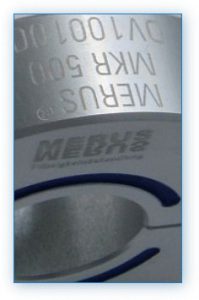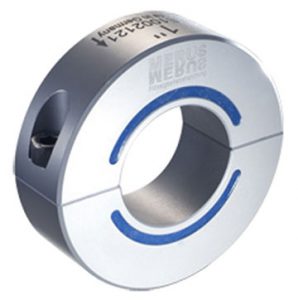Overview
Merus has succeeded in measuring and storing the molecular oscillations of for instance rust and lime. Starting from these natural oscillations Merus develops new active oscillations. The active oscillations are stored on a carrier material, which is capable of constantly emitting these oscillations into the water. This occurs without any external energy addition, only energy supplied by environmental warmth is used. The water accepts / absorbs these oscillations and spreads them in the direction of its flow. The oscillations spread through the entire succeeding water column faster than the actual flow velocity of the water. That’s the reason why this method also works well in lines of piping which are seldom or never used. In the water the active oscillations interfere with the natural oscillations and alter the characteristics of substances.
The result: The physical properties of substances contained in water (or other liquids) are modified. For example in the case of rust oxygen no longer recognizes trivalent iron as such and hence no new rust is formed.
Mode of Operation
The principle of how Merus works, namely to modify the physical properties of substances contained in water by means of especially developed oscillations, is new and hard to understand. Scientists still argue about such principles quite controversially today. Therefore the theoretical background of this method relies on empirical research, assumptions and logical conclusions from years of work on and with this subject. This situation is similar to 19th century experimental physics, when phenomena were discovered, then checked for reproducibility and finally a theory was developed on the subject.
We do not claim, that our theories are entirely correct and also admit, that in some areas of these theories we have more questions than answers. Thus we ask everyone who feels qualified or just wishes to do so to contact us with his or her criticism or suggestion.
Water Molecule Oscillations
Molecular oscillations are highly complex oscillation patterns, which are emitted by atoms or molecules. From a simplified point of view an atom is made up of a nucleus (which in turn consists of protons and neutrons) and electrons which orbit around the nucleus. Molecules are made up of several atoms, that, again from a strongly simplified point of view, “share some electrons”. In both cases we’re not talking about rigid structures but about dynamic systems.
The movements caused by this dynamic can be described as oscillations or oscillation patterns: the molecular oscillations. The warmer the substance the greater the amplitude of this oscillation will be. Merus has managed to isolate, map and store the molecular fundamental oscillations of various substances.

Simplified water molecule.
Interference
The stored fundamental or natural oscillations are transformed and partially amplified and mirrored respectively by Merus. The overlaying of oscillations is called interference. The mathematical result of natural oscillation and interfering oscillation will be zero, if they are 180° phase-delayed and both have the same phase and amplitude. Resonance means that the amplitude of the natural oscillation is boosted by laying an additional in-phase oscillation onto the natural oscillation.
What can be done with resonance oscillations is well known. For instance a bridge will start to vibrate more and more if subjected to its resonance oscillation which may ultimately lead to the collapse of the bridge.
Efficacy
In principle, there’s an active oscillation for every substance contained in fluids that must be influenced. Active oscillations are oscillations that we have isolated and stored by applying many processes like the overlaying of several natural oscillations. The development of a new active oscillation is a tedious process which takes several hundred hours. Over the course of time Merus has developed and stored a lot of such active oscillations.
Depending on application and requirements the completed active oscillations are loaded onto a particular carrier.
Emission
Merus programs the carrier material to carry active oscillations. These active oscillations are steadily emitted into the fluid to be treated by means of the Brownian Movement. Water is capable of storing these oscillations and passing them on. In water the active oscillations encounter the natural oscillations of substances contained in water, for example those of rust, and interfere with these. Thus the entire oscillation pattern in water is influenced. Thereby diverse alterations are achieved. For instance trivalent iron (as in Fe2O3, which is rust) is changed to the effect that it reacts differently with oxygen. Lime does not solidify as quickly anymore and is flushed out continuously with the normal flow.
The product
 The carrier must be capable of storing as many active oscillations as possible, retaining them over a very long period of time and also emitting them again constantly. A great many of different carrier materials were analyzed and tried out in long test series.
The carrier must be capable of storing as many active oscillations as possible, retaining them over a very long period of time and also emitting them again constantly. A great many of different carrier materials were analyzed and tried out in long test series.
Not all materials have the ability to meet the desired requirements. High-silica aluminum ultimately proved to be the material with the best cost-value ratio and is used predominantly today. For practical reasons two half shells are assembled into the ready to use device. That way the installation can be completed with minimal expenditure of time and without much effort.

